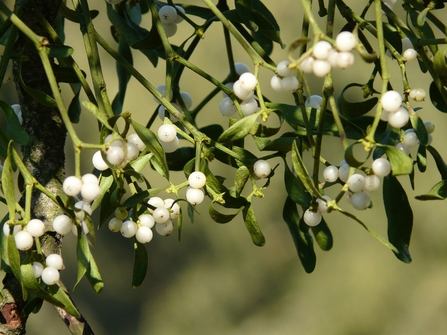
Mistletoe berries by Hans Braxmeier

Mistletoe berries by Hans Braxmeier
Round clumps of mistletoe silhouetted against the sky are an iconic winter sight. If you can get close enough, check whether you’re actually looking at mistletoe or a witches broom, which is actually a type of gall!
Mistletoe is highly poisonous, but you might see mistle thrushes, fieldfares and blackcaps eating the white berries, as they have evolved to cope with its toxic effect. The seeds are coated with a sticky substance called viscin which glues them to the branches, ready to germinate around April.
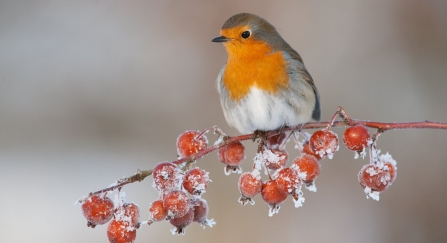
Robins become prominent in our gardens. They are usually territorial, but become more so as it gets colder. They mark their territory both by singing and posturing to rivals. If this behaviour doesn’t put off the intruder, you might see a fight lasting anything from a few seconds to over an hour!
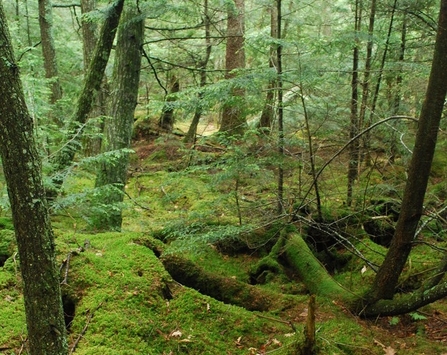
Sphagnum moss on forest floor by wackybadger CC BY-SA 2.0
With the leaves on the trees long gone, it’s easier to notice the tiny world of mosses and lichens. It’s well worth taking along a hand lens on a walk to get a closer look!
Species to look out for include for silky forklet moss, marsh hair moss and sphagnum moss, which can be found on Wildmoor Heath.
If you're looking for something to add to your Christmas list, check out this wonderful book-length guide to finding mosses in our three counties.
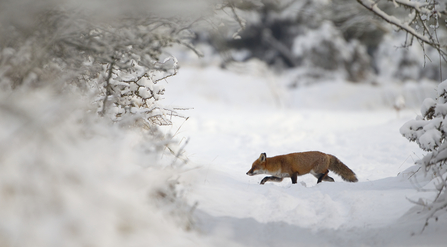
This is the busiest time of year for foxes, in that they move around more than in any other season. Look out for them in pairs – this is breeding season and the male doesn’t leave his vixen’s side as he waits for her to come into season.
If you don’t see them, you will surely hear them, as both sexes call to attract mates, and males will trespass on others’ territory looking for vixens, sparking fights.
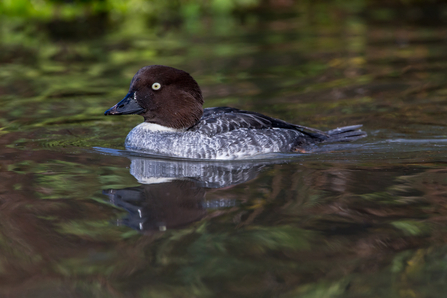
These distinctive ducks are seen on large lakes and rivers. Keep an eye out for them at Hosehill Lake and Calvert Jubilee.
Goldeneyes nest in cavities in trees so their chicks have to perform a great leap of faith the day after hatching to leave the nest and reach the ground! The population increases massively in winter due to migrants from the continent.
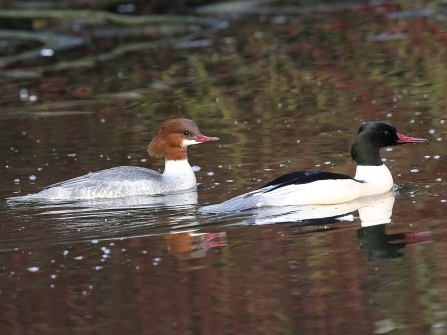
Goosanders by Margaret Holland
Goosander catch fish with their long, serrated bills - they are often called sawbills - including trout and salmon. Young goosanders need to eat over 30kg of fish before they reach adulthood. Their scientific name, Mergus merganser, roughly translates as 'plunging goose' as they are often diving under water to hunt for fish.
Calvert Jubilee and Foxcote Reservoir are great places to look for a whole range of water birds.
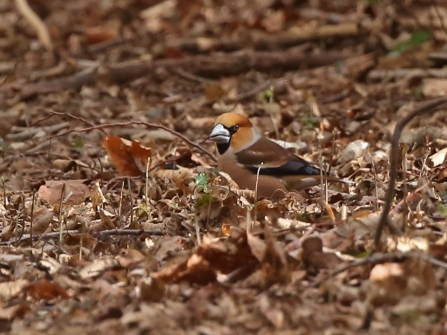
Hawfinches are the UK's largest finch and are easily identified, once you find one, by their very large bill.
The number of hawfinches increases in winter as birds arrive here to find food so keep an eye out, particularly in woodlands. Follow the HawfinchesUK Twitter account for the latest news and sightings!
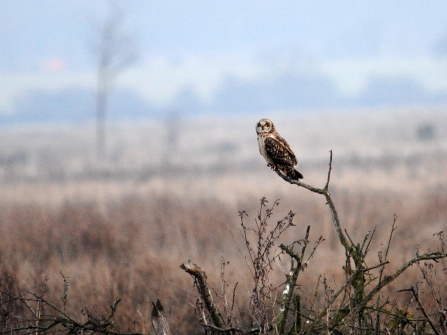
A short-eared owl perched on a branch at winter. Picture: Amy Lewis
Unlike many species of owl, you may see short-eared owls hunting during the day as well as at dusk.
In the winter our resident birds are joined by more from the continent. Look out for them hunting small mammals, and occasionally small birds, over wetlands and marshy grassland such as Chimney Meadows and the Upper Ray Meadows.
They have piercing yellow eyes and streaky feathers that camouflage them well against the grassland. Their 'ears' are actually tufts of feathers.
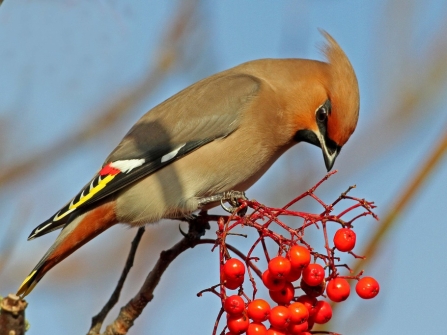
Waxwings love berries! Later in December, look for these birds in hedgerows as they tuck into hawthorn and rowan. You may even spot them in supermarket car parks where they eat the berries of cotoneaster and pyracantha.
Every few years there’s what’s known as an irruption, when large numbers of waxwings arrive in the UK. Irruptions happen when the continental population is too large for the amount of food available, generally because there has been a successful breeding season. The birds flock here instead in search of food and we get a real winter treat. The WaxwingsUK Twitter account has all the latest sightings. Let us know if you've seen any in our area by tweeting us.
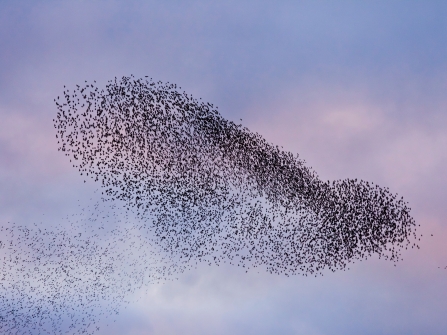
Starlings form large flocks in winter as British birds are joined by others from the continent. They roost together in huge flocks and as they gather at dusk they can form huge murmurations. Watching a murmuration of starlings wheeling and whirling across the sky is one of winter's highlights.
In our area Thatcham Reeedbeds can be a good place to spot starlings as they gather at dusk before roosting.
Sign up below to receive the latest news from BBOWT, tips about how you can help wildlife, plus information on how you can get involved.